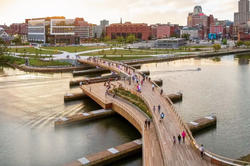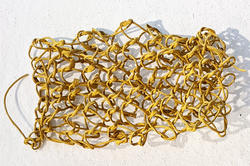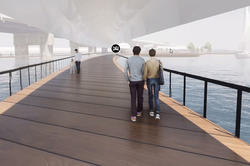Popup installations created by students in a fall Landscape Architecture studio capture the imaginations of Providence residents.
Preparing for Rising Seas
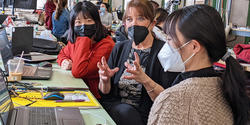
“I think this should be your first slide when you present the project, because this is your big idea,” Landscape Architecture Professor Elizabeth Hermann tells a student at an informal desk crit. Her graduate-level Urban Systems class is preparing to share ongoing research related to sea-level rise in New England’s Narragansett Bay with a six-university consortium taking the Envision Resilience Challenge. Each team is studying a different vulnerable site adjacent to the bay, and Hermann’s class is focused on South Providence.
“These frontline communities have some of the highest asthma rates in the state and lie in the direct path of rising sea levels.”
“We’re looking at a Providence neighborhood in which issues of social and environmental justice intersect with disruptive infrastructure, an estuarine landscape, a contaminated industrialized waterfront and food insecurity, among other serious concerns,” Hermann says. “These frontline communities have some of the highest asthma rates in the state and lie in the direct path of rising sea levels.”
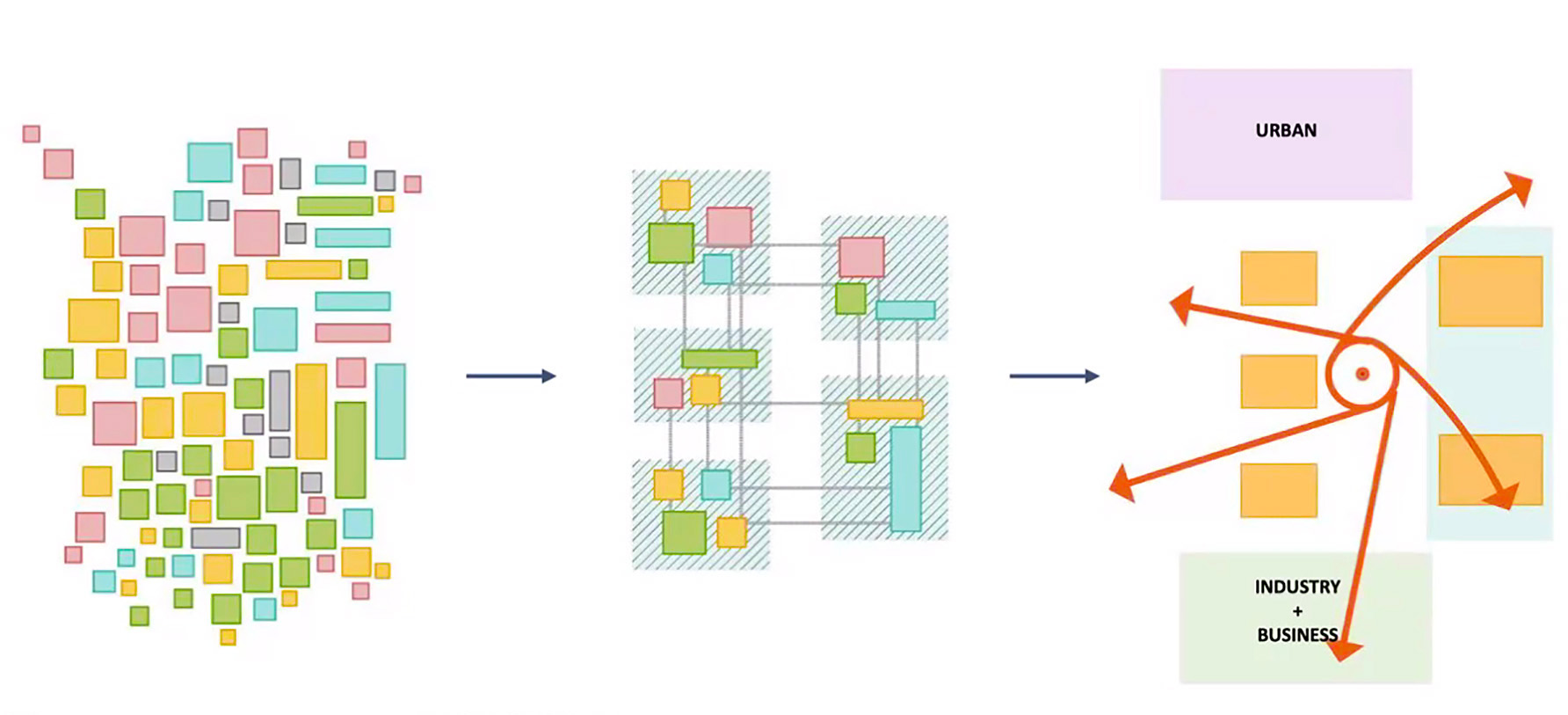
The big idea Danfei Zhang MLA 23 and Jinting Liu MLA 23 are working on involves rethinking areas of single land use in the neighborhood and creating mid-sized clusters of mixed-use space combining small-scale farming, housing and biofuel production, for example. “The I-95 highway could serve as both a barrier to rising seas and an energy farm,” Zhang says.
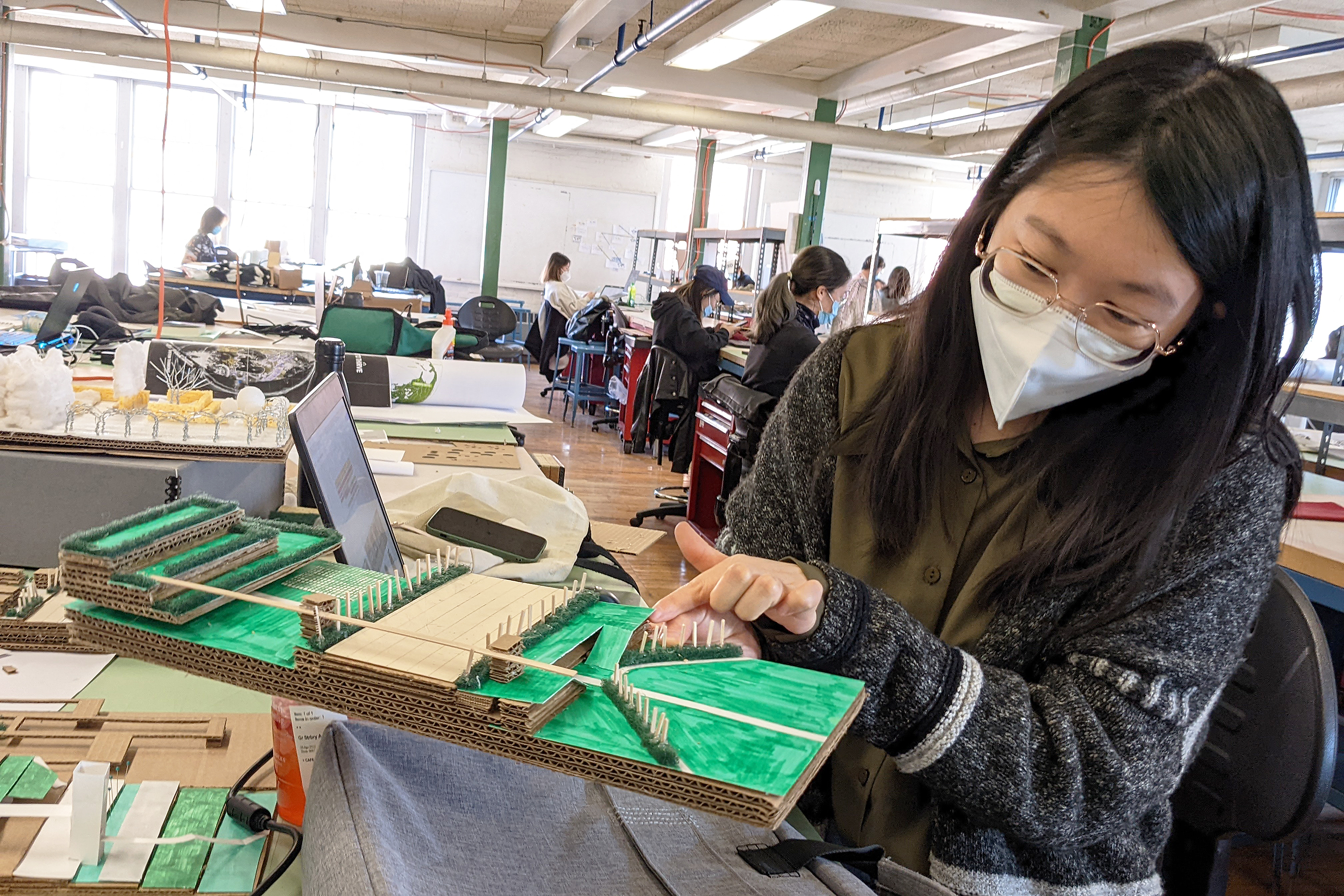
Xinyi Cai MLA 23 has identified four principles to guide her 20-year plan: empowerment, connectivity, healing and farming. She proposes turning hospital parking lots that are taking over more and more of the neighborhood into energy farms alongside fungi farms (which absorb contaminants from the soil), community-owned businesses and waterfront parks. She built cardboard models to show how the existing highway could be incorporated into the design.
“My plan for farming was inspired by traditional Chinese agriculture, where floods create mud that accumulates between fields so that the elevation rises along with the sea level,” Cai explains.

Urban farming also plays into the plan in progress by Jieqi Yao MLA 23, Joyce Shen MLA 23 and Brown University Urban Studies student Hanna Wells, who has been doing community engagement work in South Providence for the past few years. Their phased, 100-year plan would turn three historic area buildings into an educational center, an agricultural center and a healing center connected by pedestrian bridges. They also propose a deep greenway to collect runoff during storm surges and a high-speed water taxi system.
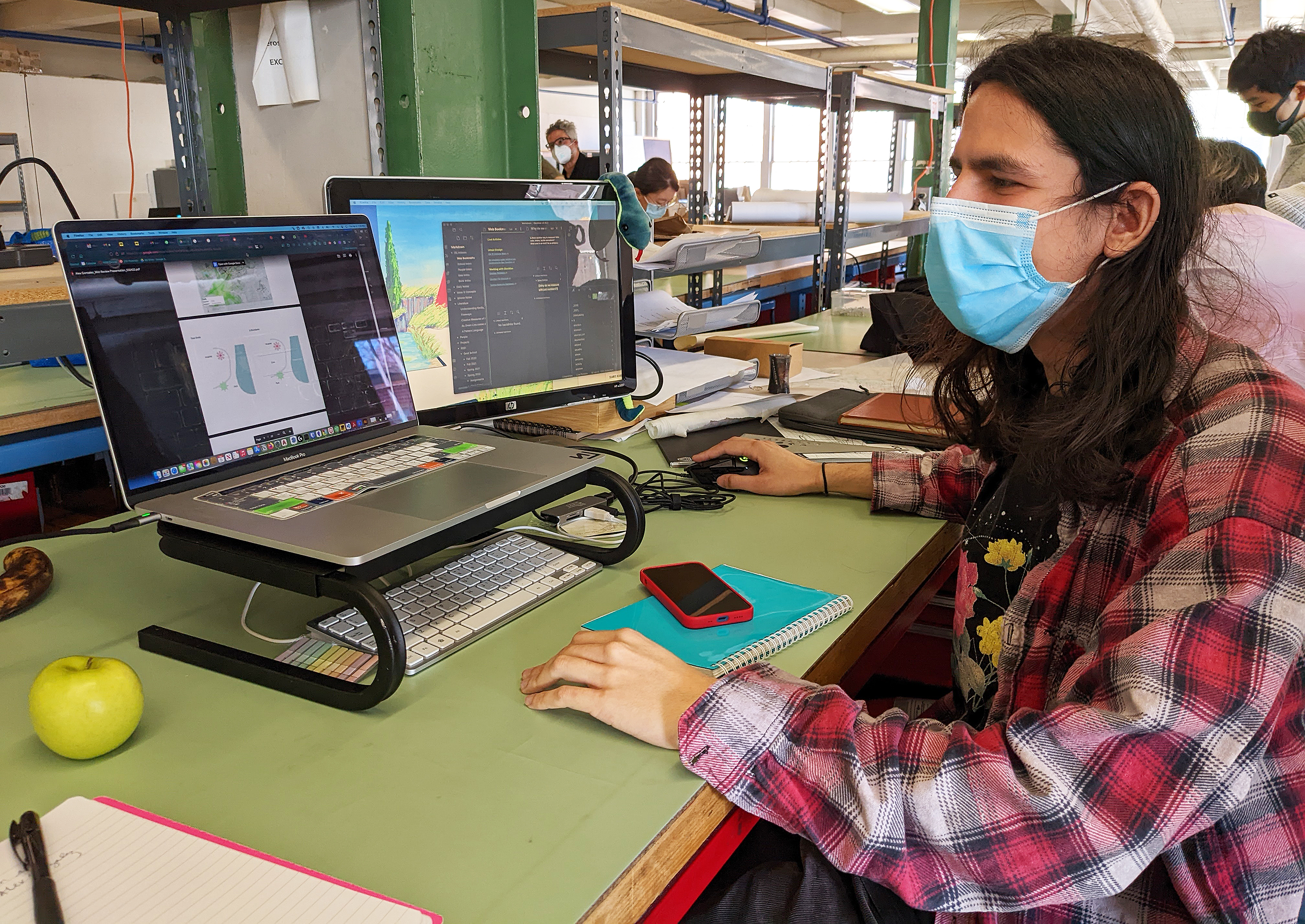
Taxis, public transportation and pedestrian access are central to the plan that Alex Gonzalez MLA 23 is developing as well. “South Providence is extremely unfriendly to pedestrians,” he says. “I’m trying to make the site walkable. If you can make a neighborhood safe and fun for kids, you make it safe and fun for everyone.”
“If you can make a neighborhood safe and fun for kids, you make it safe and fun for everyone.”
The ideas developed by the class went over well at a consortium-wide mid-semester critique led by designLAB architects founder Robert Miklos. “I appreciate the complexity of the site you’re working with,” he notes, “and I love how these projects frame the bay as a new kind of Main Street for the neighborhood.”
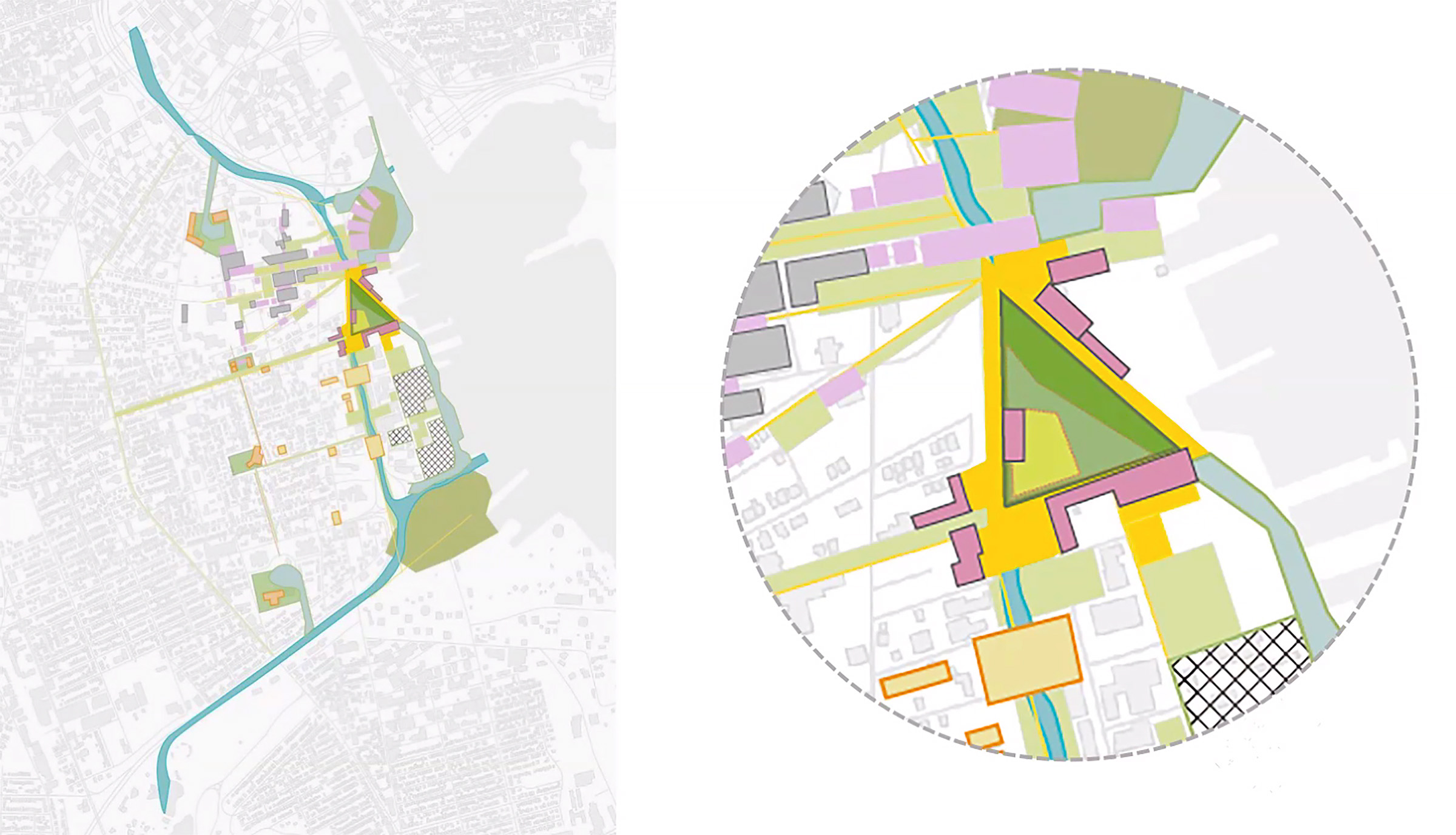
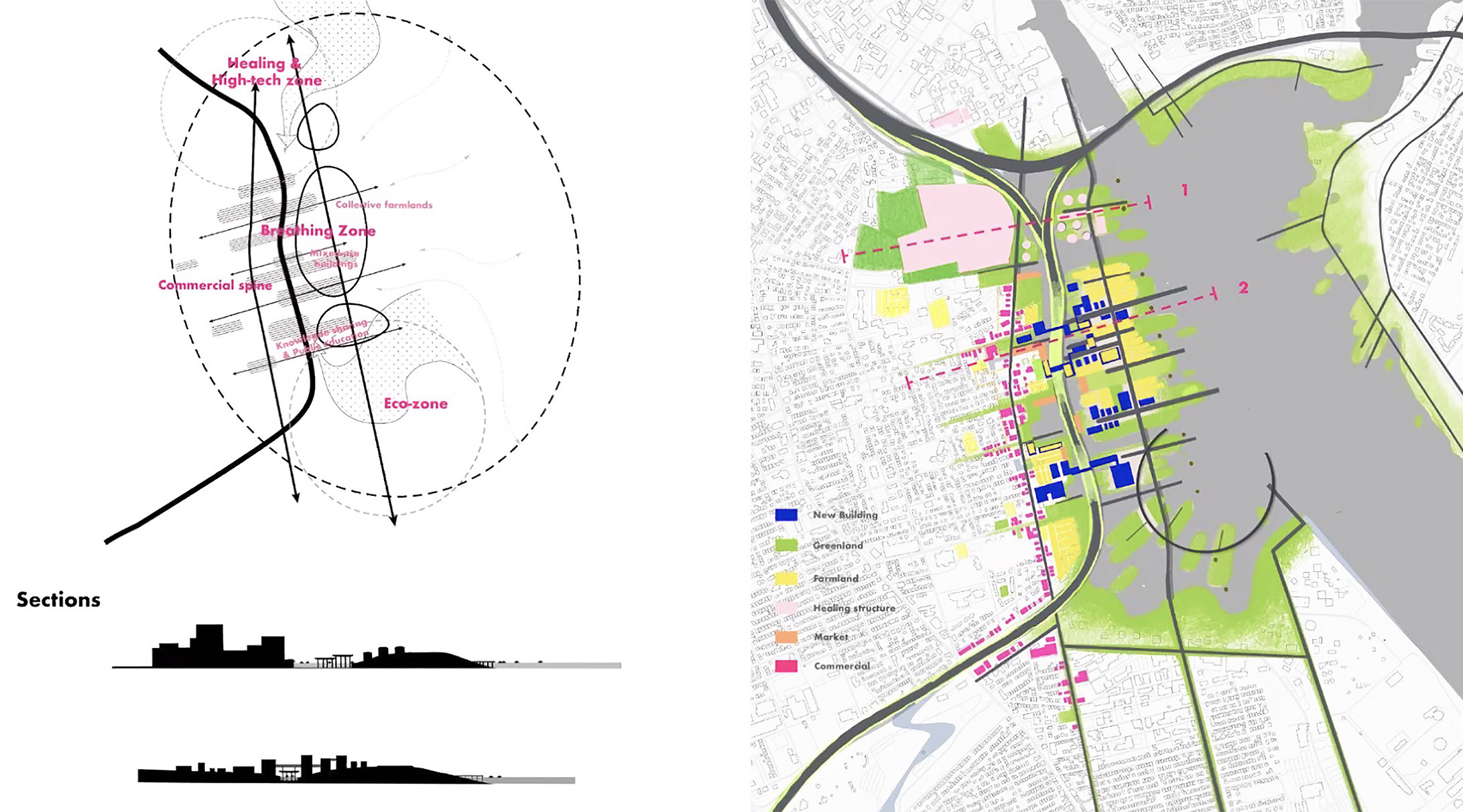
And although the students are putting a lot of thought into serving the South Providence community, they’re also thinking seriously about the nine-foot rise in the Narragansett Bay expected by the year 2100. “Wastewater treatment plants are threatened, as are bridges and dams, drinking water supplies and the many industries found along the shoreline,” Hermann notes. “These integrated, multi-scalar proposals are attempts to turn threats into opportunities and barriers into portals.”
—Simone Solondz
Student designs responding to sea-level rise around the Narragansett Bay will be on view at Providence’s WaterFire Arts Centre beginning June 4.
April 20, 2022
